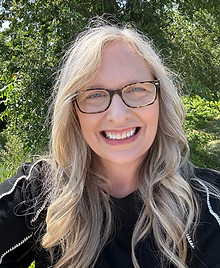The Ability to Change
- Pam Gilbert
- Sep 8, 2023
- 2 min read
Updated: Sep 20
“The measure of intelligence is the ability to change.”
Albert Einstein

Like most people, I tend to be a creature of habit. It’s natural to gravitate toward certain things. It’s easy to fall into a pattern of thinking, being, and doing. There was something about living near the mountains for a season of my life that helped me be more open to change.
One thing that I loved about being near the mountains was that each day the world looked different. Some days, you could not even see the mountains. Some days it was so clear you could see a multitude of peaks extending higher and broader than you thought possible. The newness of the landscape opened a space in my heart and mind to see other things in a new way. Somehow, living there helped me to be more receptive to change.
Of course, change is happening all the time, in significant ways and small ways. For example, consider how the golf ball has changed. Many believe that the first golf balls were wooden and can be traced back to the 14th century. Imagine a wooden ball flying at you from across the way! No wonder people began to call out “Fore!” to each other on a golf course.
Over time, golf balls changed from smooth wooden balls to leather. They were hand-sewn and filled with cow’s hair or straw. Over time, you could upgrade to a ball filled with feathers. By the 1800s, the Guttie ball came on the scene. It was made of tree sap and was a bit more rubbery.
Then something interesting happened. Some golfers started to notice a change in their fellow golfers. Those using the old, banged-up balls were playing better than those using new, smooth balls. The old balls with the dimples and dents were more aerodynamic. The so-called damaged and imperfect balls were actually more effective. In time, the best golfers were those who noticed the difference a ball made and were willing to change. Now modern golf balls may have as many as 450 dimples - the more the better. The rough spots enhance the ball.
As we get older, we notice a few dimples and become more aware of our imperfections. Chances are, we have gone through a few rough spots. What if they have the power to make us better?
Perhaps the key to embracing change lies in recognizing what is truly important and what is not. The world is and will be how you see it. Businessman Harvey MacKay says,” When you change the way you look at things, the things you look at often change.”
Whether you notice the possibilities before you or not, they are there. Whether you are strong and ready or feeling like an old, damaged golf ball, the potential for something good is there. We are not meant to stay where we are, but our greatest move may not be forward but toward - toward a greater good, toward a life lived well, toward the source of your hope and faith. Our life is always moving toward something. Notice it. What are you moving toward? How is it changing you?




